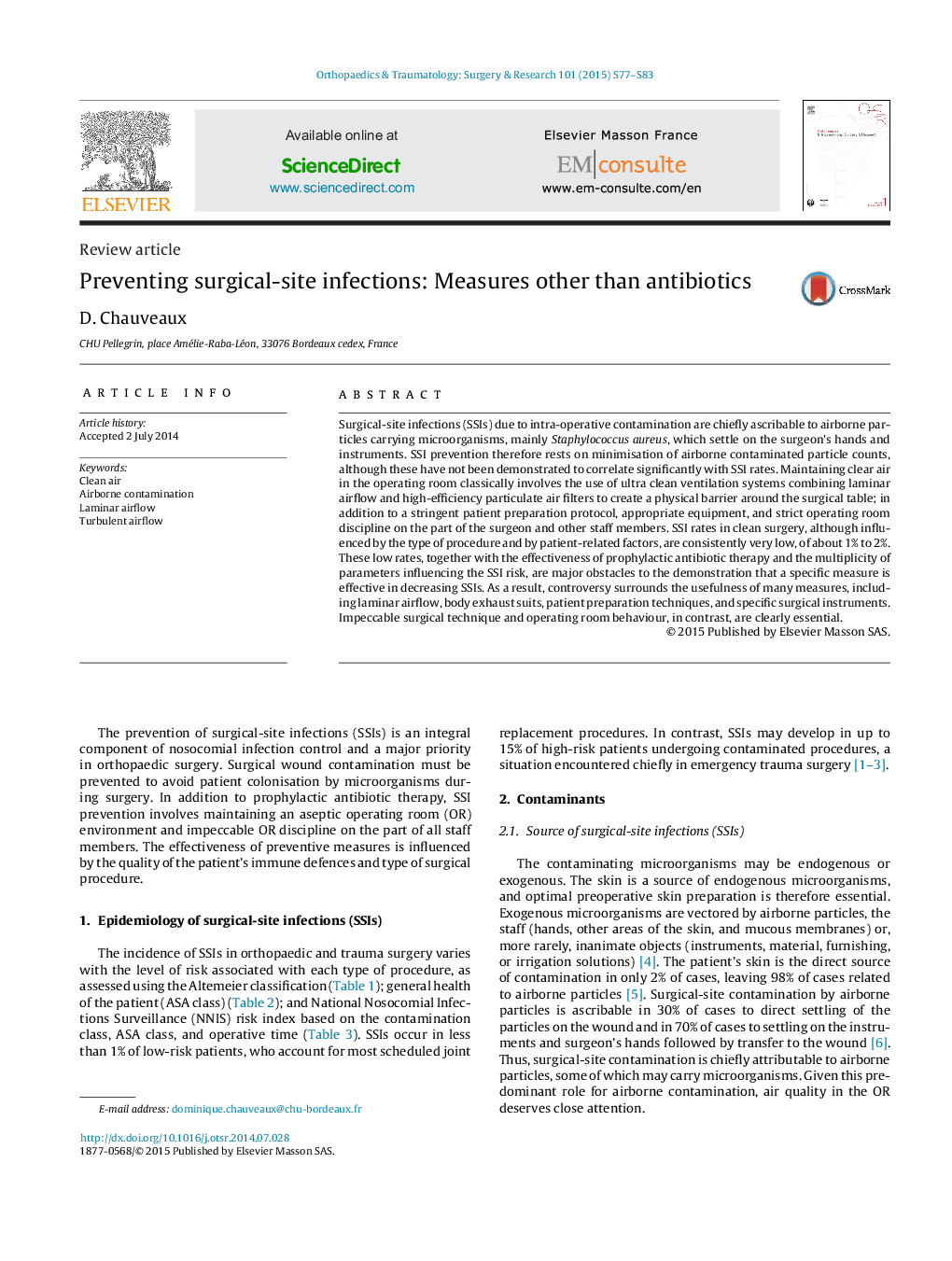| Article ID | Journal | Published Year | Pages | File Type |
|---|---|---|---|---|
| 4081102 | Orthopaedics & Traumatology: Surgery & Research | 2015 | 7 Pages |
Surgical-site infections (SSIs) due to intra-operative contamination are chiefly ascribable to airborne particles carrying microorganisms, mainly Staphylococcus aureus, which settle on the surgeon's hands and instruments. SSI prevention therefore rests on minimisation of airborne contaminated particle counts, although these have not been demonstrated to correlate significantly with SSI rates. Maintaining clear air in the operating room classically involves the use of ultra clean ventilation systems combining laminar airflow and high-efficiency particulate air filters to create a physical barrier around the surgical table; in addition to a stringent patient preparation protocol, appropriate equipment, and strict operating room discipline on the part of the surgeon and other staff members. SSI rates in clean surgery, although influenced by the type of procedure and by patient-related factors, are consistently very low, of about 1% to 2%. These low rates, together with the effectiveness of prophylactic antibiotic therapy and the multiplicity of parameters influencing the SSI risk, are major obstacles to the demonstration that a specific measure is effective in decreasing SSIs. As a result, controversy surrounds the usefulness of many measures, including laminar airflow, body exhaust suits, patient preparation techniques, and specific surgical instruments. Impeccable surgical technique and operating room behaviour, in contrast, are clearly essential.
